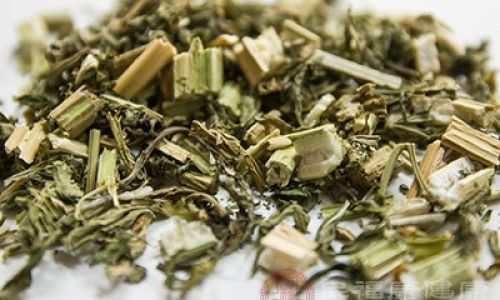Introduction
Motherwort, scientifically known as Leonurus sibiricus, is a traditional herbal plant revered for its medicinal properties across various cultures. This perennial herb, native to Asia and Europe, has been used in traditional medicine to address a multitude of health concerns, including menstrual irregularities, cardiovascular issues, and stress relief. However, beyond its medicinal uses, motherwort also finds its place in culinary traditions, where its unique flavor and nutritional benefits can enhance various dishes. This article explores the diverse cooking methods for motherwort, highlighting its versatility and potential to become a staple in modern kitchens.
Understanding Motherwort

Before diving into the culinary applications of motherwort, it’s crucial to understand its basic characteristics. The plant is identifiable by its square stems, opposite leaves, and purple or white flowers. The leaves and aerial parts of the plant are primarily used in cooking and herbal remedies. Motherwort contains a variety of bioactive compounds, such as flavonoids, tannins, and volatile oils, which contribute to its health benefits.
When incorporating motherwort into your diet, it’s essential to consult with a healthcare professional, especially if you’re pregnant, breastfeeding, or have any underlying health conditions. While generally considered safe, excessive consumption or improper preparation could lead to adverse effects.
Salads and Raw Consumption
One of the simplest ways to enjoy motherwort is by incorporating it into salads. The fresh leaves can be washed thoroughly, dried, and chopped before being mixed with your favorite salad ingredients. The delicate flavor of motherwort complements fresh vegetables, fruits, nuts, and seeds, making it an excellent addition to a nutritious and refreshing meal.
For a more flavorful twist, you can create a motherwort vinaigrette by infusing olive oil with dried motherwort leaves and mixing it with a balsamic vinegar base. This vinaigrette not only enhances the taste of your salad but also infuses it with the herb’s health benefits.

Soups and Stews
Motherwort’s earthy and slightly bitter taste makes it an ideal ingredient for hearty soups and stews. Its ability to withstand long cooking times allows the herb’s flavors and nutrients to meld seamlessly with the other ingredients.
To prepare a motherwort soup, start by sautéing onions, garlic, and carrots in a pot until they’re soft and fragrant. Add chopped motherwort leaves and stems, followed by vegetable broth or chicken broth. Let the mixture simmer for about 30 minutes to an hour, allowing the flavors to develop. Season with salt, pepper, and herbs of your choice for a comforting and nutritious meal.
For a meat-based stew, motherwort can be added towards the end of the cooking process to preserve its delicate flavor and texture. Chicken, beef, or lamb stews benefit from the herb’s subtle aroma and health benefits, making it a perfect dish for colder weather.
Teas and Infusions

One of the most traditional ways to consume motherwort is by brewing it into a tea. To make motherwort tea, simply steep dried motherwort leaves in hot water for about 5-10 minutes. You can sweeten the tea with honey or lemon to taste, making it a soothing and refreshing beverage.
Infusions are another way to enjoy motherwort’s benefits. By combining motherwort with other herbs like chamomile, lavender, or lemon verbena, you can create a customized herbal blend tailored to your specific needs. These infusions can be enjoyed hot or iced, making them versatile options for any time of day.
Stir-fries and Side Dishes
Motherwort’s versatility extends to stir-fries and side dishes, where its unique flavor can elevate the taste of vegetables, tofu, or tempeh. To prepare a motherwort stir-fry, heat a little oil in a pan and add garlic, ginger, and red pepper flakes (optional). Once fragrant, add sliced vegetables such as bell peppers, broccoli, and snap peas. Stir in chopped motherwort leaves during the last few minutes of cooking to retain their bright green color and delicate texture. Season with soy sauce, sesame oil, and a sprinkle of sesame seeds for a flavorful and nutritious dish.
For side dishes, motherwort can be steamed or sautéed and served with a simple dressing of olive oil, lemon juice, and herbs. This preparation highlights the herb’s natural flavors and makes it a delightful accompaniment to grilled meats, fish, or poultry.

Desserts and Beverages
Surprisingly, motherwort can also be incorporated into desserts and beverages, adding a subtle herbal note to sweet treats. For instance, you can infuse motherwort into a simple syrup, which can then be used to sweeten iced tea, lemonade, or cocktails. The syrup retains the herb’s subtle flavor and adds a touch of sophistication to your beverages.
In desserts, motherwort can be used sparingly to avoid overpowering the sweetness. For example, you can incorporate dried motherwort leaves into a fruit compote or a herbal jelly, where its flavor blends harmoniously with the other ingredients. Alternatively, you can use motherwort-infused honey to drizzle over yogurt, granola, or baked goods, adding a hint of herbal complexity to your sweet treats.
Conclusion
Motherwort’s diverse cooking methods demonstrate its potential as a culinary herb beyond its traditional medicinal uses. From fresh salads and soothing teas to hearty stews and flavorful stir-fries, motherwort offers a unique and nutritious addition to your diet. As you explore these various preparations, remember to prioritize proper handling and consumption, consulting with healthcare professionals as needed. With its rich flavor and array of health benefits, motherwort is poised to become a cherished ingredient in modern kitchens, blending tradition with innovation.







0 comments